Government World Mints
Below are is a list of government world mints that strike coins that can be used for legal tender in their respetive county. This is a list of 70 world mints. If you want to learn more about the difference between government world mints vs private mints, you can refer to our main mints page, which goes over the differences. Each mint has its own page with more elaborate detail.
Andorra – Servei D’Emissions Vegueira Episcopal – When the euro was introduced, Andorra adopted that as its currency, and ceased producing its own coins. The Andorran mint currently remains in operation, but only for the production of collectible stamps. The Servei D’Emissions Vegueira Episcopal could begin producing coins again in the future, and does still remain open.
When the euro was introduced, Andorra adopted that as its currency, and ceased producing its own coins. The Andorran mint currently remains in operation, but only for the production of collectible stamps. The Servei D’Emissions Vegueira Episcopal could begin producing coins again in the future, and does still remain open.
Austria – Austrian Mint AG – This mint has its genesis in the crusades, and its first 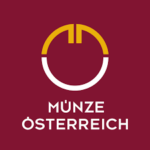 transaction involved Duke Leopold V and Richard the Lionheart in the year 1194. These days the only currency it produces is the euro coin, but prior to 2002 when Austria adopted the euro, its national mint was responsible for production of the Austrian schilling.
transaction involved Duke Leopold V and Richard the Lionheart in the year 1194. These days the only currency it produces is the euro coin, but prior to 2002 when Austria adopted the euro, its national mint was responsible for production of the Austrian schilling.
Australia – Royal Australian Mint – This was the first mint in Australia that was 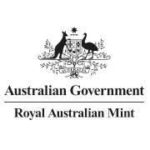 established as an independent Australian one, not as a branch of the British Royal Mint. It opened in 1965, and began producing Australia’s own coins the following year. The mint today can produce up to two million coins per day.
established as an independent Australian one, not as a branch of the British Royal Mint. It opened in 1965, and began producing Australia’s own coins the following year. The mint today can produce up to two million coins per day.
Australia – Perth Mint – This one was a branch of the British Royal Mint when it was 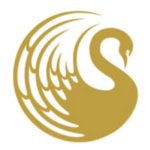 established in 1899. Gold deposits were discovered in the region that year, so the mint was opened to collect raw gold from miners and refine it into coins. Today the Perth Mint produces legal tender coins as well as precious metal bars and medallions, and collectible coins designed at the mint.
established in 1899. Gold deposits were discovered in the region that year, so the mint was opened to collect raw gold from miners and refine it into coins. Today the Perth Mint produces legal tender coins as well as precious metal bars and medallions, and collectible coins designed at the mint.
Germany – Bavarian State Mint – 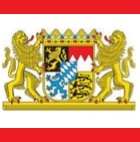 Founded almost 900 years ago and located in Munich, this mint is one of five in Germany. Almost a quarter of the nation’s euro coins are produced at this mint. The building was damaged multiple times by air raids in World War II, and then it changed locations in 1986.
Founded almost 900 years ago and located in Munich, this mint is one of five in Germany. Almost a quarter of the nation’s euro coins are produced at this mint. The building was damaged multiple times by air raids in World War II, and then it changed locations in 1986.
Belgium – Royal Belgian Mint – As of 2018, the official currency of Belgium is the euro, so 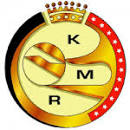 unique Belgian coins are no longer produced. And in fact no coins at all are produced any longer at this mint; Belgium orders its euro coins from beyond its borders. However the mint is still open, and had an illustrious history producing Belgian coins from the 1800s to a couple of years ago.
unique Belgian coins are no longer produced. And in fact no coins at all are produced any longer at this mint; Belgium orders its euro coins from beyond its borders. However the mint is still open, and had an illustrious history producing Belgian coins from the 1800s to a couple of years ago.
Mexico – Casa de Moneda de Mexico – The oldest mint in both North and South 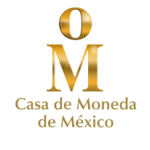 America, the Mexican Mint was established in 1535 by a decree from Spain to create the first mint in the Americas. Located in Mexico City, the original location no longer produces coins, but is home to a cultural museum.
America, the Mexican Mint was established in 1535 by a decree from Spain to create the first mint in the Americas. Located in Mexico City, the original location no longer produces coins, but is home to a cultural museum.
Bermuda – Bermuda Monetary Authority – The Bermuda Monetary Authority was 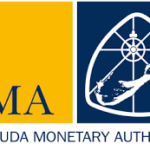 established in 1969, and today acts as both an issuer of currency and a financial consultant to the government. The mint manufactures practical coins as well as some novelty collectibles, like a Bermuda Triangle coin.
established in 1969, and today acts as both an issuer of currency and a financial consultant to the government. The mint manufactures practical coins as well as some novelty collectibles, like a Bermuda Triangle coin.
Brazil – Casa Da Moeda Do Brasil – Brazil’s mint is over 300 years old. In addition to  producing its own country’s banking materials, up until the 1980s it produced coins, bills, and passports for some other South American countries and some countries in Africa that did not have their own mints.
producing its own country’s banking materials, up until the 1980s it produced coins, bills, and passports for some other South American countries and some countries in Africa that did not have their own mints.
Bulgaria – Bulgarian National Bank – Bulgaria gained its sovereignty in 1879, and in that 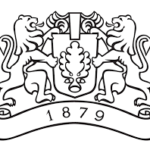 year it established its national bank, which included its mint. The Bulgarian Mint is the only legal manufacturer of coins, Bulgarian Orders, and medals in the nation. It produces the “lev,” which is the national currency.
year it established its national bank, which included its mint. The Bulgarian Mint is the only legal manufacturer of coins, Bulgarian Orders, and medals in the nation. It produces the “lev,” which is the national currency.
Canada – The Royal Canadian Mint – The Royal Canadian Mint was initially established by the British in 1908 in Ottawa, as a branch of the British Royal Mint. Canada attained its sovereign ownership over the mint in the year 1931. Today, it not only produces all of Canada’s coins, but also refines gold.
the British in 1908 in Ottawa, as a branch of the British Royal Mint. Canada attained its sovereign ownership over the mint in the year 1931. Today, it not only produces all of Canada’s coins, but also refines gold.
Cayman Islands – Cayman Islands Monetary Authority – The Cayman Islands 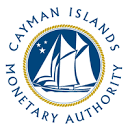 Currency Board began issuing coins and banknotes in 1972. The Cayman Islands Monetary Authority was then established in 1997. The Cayman Islands are today thought to contract with other mints for the production of their currency. The British Royal Mint makes their coins, and De La Rue Printing makes their banknotes.
Currency Board began issuing coins and banknotes in 1972. The Cayman Islands Monetary Authority was then established in 1997. The Cayman Islands are today thought to contract with other mints for the production of their currency. The British Royal Mint makes their coins, and De La Rue Printing makes their banknotes.
China – People’s Republic of China Gold Coin Inc. (CGCI) – This is one of the branch  companies that falls under the sizable “People’s Bank of China.” It, along with several other companies, is responsible for making Chinese Modern Precious Metal Commemorative Coins. It is located in Shenzhen in Southeastern China, near Hong Kong.
companies that falls under the sizable “People’s Bank of China.” It, along with several other companies, is responsible for making Chinese Modern Precious Metal Commemorative Coins. It is located in Shenzhen in Southeastern China, near Hong Kong.
China – Republic of Central Mint of China – This is considered Taiwan’s official mint. 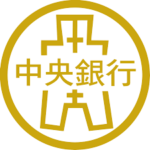 Though mainland China does not officially recognize Taiwan as sovereign, Taiwan does exist independently and has its own mint. This mint produces coins and bullion, as well as commemorative coins and medals and official seals.
Though mainland China does not officially recognize Taiwan as sovereign, Taiwan does exist independently and has its own mint. This mint produces coins and bullion, as well as commemorative coins and medals and official seals.
Croatia – Croatian Mint – Croatia’s mint is a relatively new one, only opening in the 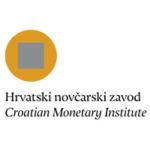 early 1990s. It is where the country’s currencies, the kuna and lipa coins, are produced, and also its commemorative coins as well. No paper money is produced there, only coins, as well as medals and commemorative badges.
early 1990s. It is where the country’s currencies, the kuna and lipa coins, are produced, and also its commemorative coins as well. No paper money is produced there, only coins, as well as medals and commemorative badges.
Cuba – Central Bank of Cuba – The Cuban Mint operates under the Central Bank of  Cuba. Cuba’s coins were for a time produced at mints in the United States. Today they are issued at Cuba’s National Bank, which was originally established in 1950 as the National Bank of Cuba. The bank has reorganized multiple times, and as of 1997 was re-established as the Central Bank of Cuba.
Cuba. Cuba’s coins were for a time produced at mints in the United States. Today they are issued at Cuba’s National Bank, which was originally established in 1950 as the National Bank of Cuba. The bank has reorganized multiple times, and as of 1997 was re-established as the Central Bank of Cuba.
Czech Republic – Czech Mint – Established in 1993, the Czech Mint produces all of the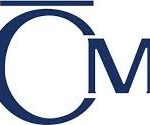 nation’s currency. It produces commemorative coins as well. Though it was set up by the Czech National Bank, it now is structured as such that it falls under a company called Bizuterie Ceska Mincovna a.s.
nation’s currency. It produces commemorative coins as well. Though it was set up by the Czech National Bank, it now is structured as such that it falls under a company called Bizuterie Ceska Mincovna a.s.
Cyprus – Central Bank of Cyprus – The Central Bank of Cyprus was established in 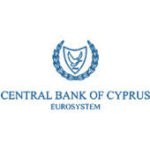 1963. Prior to that, the nation and its currency were under British control. From 1963 until 2008, Cyprus had its own unique Cypriot coins and banknotes, which were produced there. In 2008, Cyprus adopted the euro.
1963. Prior to that, the nation and its currency were under British control. From 1963 until 2008, Cyprus had its own unique Cypriot coins and banknotes, which were produced there. In 2008, Cyprus adopted the euro.
Denmark – Danmarks Nationalbank – The Danmarks Nationalbank has an illustrious 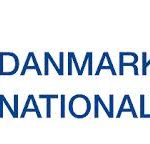 history, with the first coins struck in the year 995, bearing the likeness of Sven I Forkbeard. The coins were widely used throughout the Middle Ages. The National Bank was officially formed in 1818. The krone has been the unit of currency in Denmark since 1875.
history, with the first coins struck in the year 995, bearing the likeness of Sven I Forkbeard. The coins were widely used throughout the Middle Ages. The National Bank was officially formed in 1818. The krone has been the unit of currency in Denmark since 1875.
Egypt – Central Bank of Egypt – For most of its long and colorful history, Egypt’s 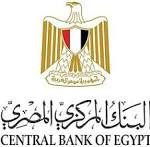 banking and currency were not centralized. Not until the 1830s did it have a singular unit of currency. In 1834, a bimetallic currency of silver and gold was decreed. The Egyptian pound began being used two years later. Since then, the Central Bank of Egypt has issued banknotes and acted to regulate the nation’s banking system.
banking and currency were not centralized. Not until the 1830s did it have a singular unit of currency. In 1834, a bimetallic currency of silver and gold was decreed. The Egyptian pound began being used two years later. Since then, the Central Bank of Egypt has issued banknotes and acted to regulate the nation’s banking system.
Euromint Project – The Euromint Project is a joint effort to preserve and draw 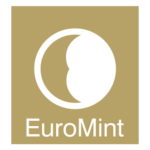 attention to historic mints across Europe. Three cities in Portugal, Spain and the Czech Republic that contain historic mints that are being restored, are the main partners behind the project. The end goal of the project is to make museums of a series of the continent’s medieval and early modern mints.
attention to historic mints across Europe. Three cities in Portugal, Spain and the Czech Republic that contain historic mints that are being restored, are the main partners behind the project. The end goal of the project is to make museums of a series of the continent’s medieval and early modern mints.
Fiji – Reserve Bank of Fiji – This bank has the distinction of being the only place in the 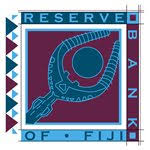 world that produces the Fijian dollar. The bank’s building was the island nation’s first skyscraper and still remains its tallest building. It was built over a period spanning from the 1970s to its establishment in 1984.
world that produces the Fijian dollar. The bank’s building was the island nation’s first skyscraper and still remains its tallest building. It was built over a period spanning from the 1970s to its establishment in 1984.
Finland – Mint of Finland – The Mint of Finland was established in 1860 by Alexander 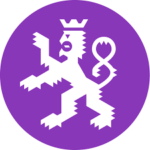 II of Russia. In addition to minting its own coins, this mint today produces Sweden’s currency and the euro coins for Estonia, Greece, Luxembourg, Slovenia, Cyprus and Ireland. It also is a partial owner of the Royal Norwegian Mint.
II of Russia. In addition to minting its own coins, this mint today produces Sweden’s currency and the euro coins for Estonia, Greece, Luxembourg, Slovenia, Cyprus and Ireland. It also is a partial owner of the Royal Norwegian Mint.
France – Paris Mint, Monnaie de Paris – The Paris Mint produces France’s euro coins. 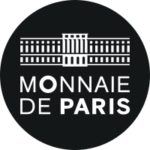 It was founded in the year 864, though the building that currently houses the mint was not built until the late 18th century. Coins and medals are produced there. It is open to the public, and contains a museum.
It was founded in the year 864, though the building that currently houses the mint was not built until the late 18th century. Coins and medals are produced there. It is open to the public, and contains a museum.
Germany – Verkaufsstelle fur Sammlermunzen der Bundesrepublik – This is the 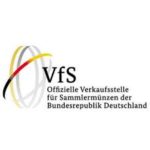 official sales agency for German collector’s coins. It was established in 1967 as a result of growing interest in German collectible coins. All kinds of coins commemorating historical events in Germany’s history are available through the vfs.
official sales agency for German collector’s coins. It was established in 1967 as a result of growing interest in German collectible coins. All kinds of coins commemorating historical events in Germany’s history are available through the vfs.
Great Britain – The British Royal Mint – In addition to producing all of the British coins, the 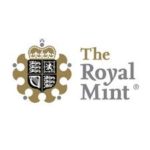 British Royal Mint produces coins for 60 different countries around the world. It was opened in 1968 and is located in Wales. It was located in the historic Tower of London for a time in the 13th century.
British Royal Mint produces coins for 60 different countries around the world. It was opened in 1968 and is located in Wales. It was located in the historic Tower of London for a time in the 13th century.
Great Britain – The Birmingham Mint – This mint was opened in the late 18th century.  At its founding it was private, but produced coinage in cooperation with the Royal Mint. It is no longer operational today; a trade slowdown and contractual factors with the Royal Mint in the early 2000s led to its sale. Though it is still a historically registered site, it is being redeveloped for other purposes.
At its founding it was private, but produced coinage in cooperation with the Royal Mint. It is no longer operational today; a trade slowdown and contractual factors with the Royal Mint in the early 2000s led to its sale. Though it is still a historically registered site, it is being redeveloped for other purposes.
Great Britain – Pobjoy Mint Ltd – This is a private mint that exclusively sells 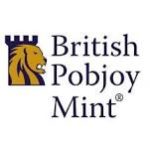 commemorative coins and medals. The only currency it produces is some for British territories around the world. It is primarily known for the unique commemorative coins it produces, and it has won 18 “Coin of the Year” awards.
commemorative coins and medals. The only currency it produces is some for British territories around the world. It is primarily known for the unique commemorative coins it produces, and it has won 18 “Coin of the Year” awards.
Greece – Bank of Greece – Greece’s central bank is headquartered in Athens, but has 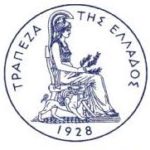 branches across the country. The bank was opened in the 1920s. Euro banknotes as well as gold sovereigns are produced there. It is today largely under the control of the governing body the “European System of Central Banks.”
branches across the country. The bank was opened in the 1920s. Euro banknotes as well as gold sovereigns are produced there. It is today largely under the control of the governing body the “European System of Central Banks.”
Hungary – Magyar Nemzeti Bank – The central bank of Hungary, the Magyar Nemzeti 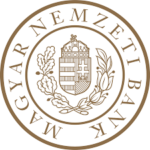 Bank is located in Budapest and was founded in 1924. It falls under the umbrella of the European System of Central Banks, but produces its own national currency called the forint. The bank works to maintain price stability and control the money in circulation.
Bank is located in Budapest and was founded in 1924. It falls under the umbrella of the European System of Central Banks, but produces its own national currency called the forint. The bank works to maintain price stability and control the money in circulation.
Iceland – Central Bank of Iceland – Founded in 1961, Iceland’s central bank produces all of 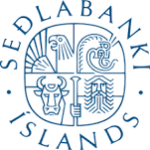 the national currency, the króna. It is the only place in the world where the currency is produced. It is in the city of Reykjavik. The bank’s campus also contains a library and an archive spotlighting Iceland’s economic history.
the national currency, the króna. It is the only place in the world where the currency is produced. It is in the city of Reykjavik. The bank’s campus also contains a library and an archive spotlighting Iceland’s economic history.
India – India Government Mint, Alipore Mint Kolkata – This mint was established in  the mid-18th century. However, it has had a number of different locations since then. The current building was completed in the 1950s after construction was stalled for a time due to World War II. It produces India’s coins and medallions.
the mid-18th century. However, it has had a number of different locations since then. The current building was completed in the 1950s after construction was stalled for a time due to World War II. It produces India’s coins and medallions.
Indonesia – Indonesian Security Printing & Minting Co. – This organization is located 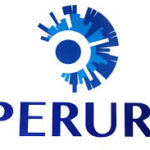 in Jakarta, and produces Rupiah banknotes as well as coins. It was established in the 1970s. Though the headquarters is located in Jakarta, printing and minting takes place in the cities of Karawang and Surabaya. Nepalese rupees are also printed there.
in Jakarta, and produces Rupiah banknotes as well as coins. It was established in the 1970s. Though the headquarters is located in Jakarta, printing and minting takes place in the cities of Karawang and Surabaya. Nepalese rupees are also printed there.
IMMDC International Mint Market Development Council – This is a group of seven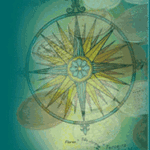 mints that launched the website WorldMints.com as an effort to promote interest in coin-collecting worldwide. The members are the mints of the following nations: Austria, Japan, Australia, Canada, Great Britain, Singapore, Spain and the United States.
mints that launched the website WorldMints.com as an effort to promote interest in coin-collecting worldwide. The members are the mints of the following nations: Austria, Japan, Australia, Canada, Great Britain, Singapore, Spain and the United States.
Iraq – Central Bank of Iraq – Located in Baghdad and founded in 1947, the Central 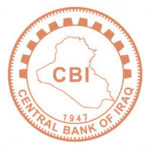 Bank of Iraq produces and circulates the national currency, the dinar. In recent history, the bank has been characterized by breaches in security and corruption. In 2014, Islamic State militants stole the equivalent of $429 million US dollars from the bank.
Bank of Iraq produces and circulates the national currency, the dinar. In recent history, the bank has been characterized by breaches in security and corruption. In 2014, Islamic State militants stole the equivalent of $429 million US dollars from the bank.
Ireland – Central Bank of Ireland – This bank is located in the capital city of Dublin and was established 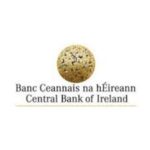 in 1943. Before euro currency was introduced into Ireland, the nation used the Irish pound, produced at its central bank. It now produces the euro coins and bills in support of the European Central Bank.
in 1943. Before euro currency was introduced into Ireland, the nation used the Irish pound, produced at its central bank. It now produces the euro coins and bills in support of the European Central Bank.
Islamic Mint – This mint is headquartered in Dubai in United Arab Emirates, but also has a Malaysian location as 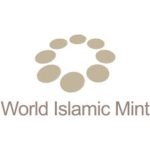 well. It produces the gold and silver coins mentioned in the Koran called dirhams and dinars for use within the Islamic community in several countries. These coins were first minted in the year 695.
well. It produces the gold and silver coins mentioned in the Koran called dirhams and dinars for use within the Islamic community in several countries. These coins were first minted in the year 695.
Israel – Israel Government Coins and Medals Corporation – This corporation 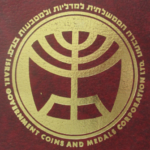 produces Israel’s commemorative coins and banknotes. It was under governmental control until 2008, but has been private ever since. It was established by Israel’s first Prime Minister, David Ben Gurion, in 1958. It is located in Jerusalem.
produces Israel’s commemorative coins and banknotes. It was under governmental control until 2008, but has been private ever since. It was established by Israel’s first Prime Minister, David Ben Gurion, in 1958. It is located in Jerusalem.
Italy – Zecca di Stato – Istituto Polografica e Zecca dello Stato – This mint is located in 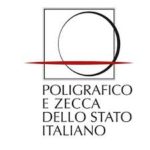 Rome and dates as far back as 269 B.C. Today it produces euro coins as well as coins for a number of other specific countries, passports, and postage stamps. It also produces collector’s items. It was founded in 1928.
Rome and dates as far back as 269 B.C. Today it produces euro coins as well as coins for a number of other specific countries, passports, and postage stamps. It also produces collector’s items. It was founded in 1928.
Japan – Japan Mint – Located in Osaka, the Japan Mint was established in 1871 and is 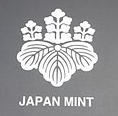 responsible for producing the nation’s coins. It does not produce any paper money. There are also branches in Tokyo and Hiroshima. Medals and ornamental pieces are manufactured at the headquarters in Osaka as well.
responsible for producing the nation’s coins. It does not produce any paper money. There are also branches in Tokyo and Hiroshima. Medals and ornamental pieces are manufactured at the headquarters in Osaka as well.
Jersey – Information on the island of Jersey’s minting is hard to come by, but what is 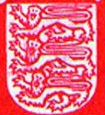 known is that Jersey is a British territory in the Channel Islands that was threatened by the Germans in World War II. Commemorative coins that portray Jersey and the rest of the Channel Islands are considered a rare novelty and are popular collector’s items.
known is that Jersey is a British territory in the Channel Islands that was threatened by the Germans in World War II. Commemorative coins that portray Jersey and the rest of the Channel Islands are considered a rare novelty and are popular collector’s items.
Jordan – Central Bank of Jordan – Jordan’s Central Bank is located in Amman. The bank’s job 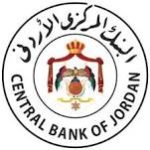 is to distribute the national currency, the dinar, and maintain a sufficient reserve of gold and other currencies. It was founded in the 1960s. Its current governor is Ziad Fariz. It employs about 1200 people.
is to distribute the national currency, the dinar, and maintain a sufficient reserve of gold and other currencies. It was founded in the 1960s. Its current governor is Ziad Fariz. It employs about 1200 people.
North Korea – Central Bank of the Democratic People’s Republic of Korea – The 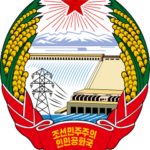 Central Bank of the Democratic People’s Republic of Korea is located in Pyongyang, North Korea and was established in 1947. It issues the nation’s currency, the won. North Korea has had many different banking formats over its history, including originally being controlled by the Soviet military in the 1940s.
Central Bank of the Democratic People’s Republic of Korea is located in Pyongyang, North Korea and was established in 1947. It issues the nation’s currency, the won. North Korea has had many different banking formats over its history, including originally being controlled by the Soviet military in the 1940s.
South Korea – Bank of Korea – The Bank of Korea is South Korea’s central bank, as  well as the issuer of the nation’s currency, the won. It was founded in 1950 and is located in Seoul. When Korea was liberated in the 1940s, it was in a state of turmoil and extreme inflation. This brought about the establishment of a central bank.
well as the issuer of the nation’s currency, the won. It was founded in 1950 and is located in Seoul. When Korea was liberated in the 1940s, it was in a state of turmoil and extreme inflation. This brought about the establishment of a central bank.
Lesotho – Central Bank of Lesotho – This small Southern African nation’s central bank ![]() is located in its capital city of Maseru. It was established in the 1970s. It is under the oversight of the government, but enjoys independence in making monetary policy. It produces the Lesotho national currency, the Maloti.
is located in its capital city of Maseru. It was established in the 1970s. It is under the oversight of the government, but enjoys independence in making monetary policy. It produces the Lesotho national currency, the Maloti.
Luxembourg – Caisse Generale de L’Etat – Luxembourg’s central bank was established 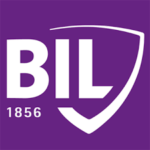 at the time the European Central Bank was created, in 1998. It is located in Luxembourg City. Though it still exists today, the European Central Bank has taken over many of its responsibilities. It issues euro banknotes.
at the time the European Central Bank was created, in 1998. It is located in Luxembourg City. Though it still exists today, the European Central Bank has taken over many of its responsibilities. It issues euro banknotes.
Macau – Instituto Emissor de Macau E.P. – 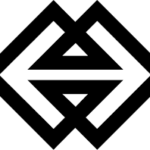 This is Macau’s central bank, established in 1999. It was established at that time because it was when Macau was transferred from Portuguese ownership to Chinese. It produces and circulates the currency, the Macanese pataca. Macau is a special administrative region on China’s eastern coast.
This is Macau’s central bank, established in 1999. It was established at that time because it was when Macau was transferred from Portuguese ownership to Chinese. It produces and circulates the currency, the Macanese pataca. Macau is a special administrative region on China’s eastern coast.
Malaysia – The Royal Mint of Malaysia –  Malaysia began producing its own money in 1971, at its central bank. However the central bank later underwent a reorganization, and it was determined that minting ought to be privatized. So in 2000, the Malaysian Mint was established. It produces and distributes the nation’s currency, the ringgit.
Malaysia began producing its own money in 1971, at its central bank. However the central bank later underwent a reorganization, and it was determined that minting ought to be privatized. So in 2000, the Malaysian Mint was established. It produces and distributes the nation’s currency, the ringgit.
Malta – Order of Il Sovrano Militare Ordine di Malta – ![]() The first coins for Malta—a tiny island off the Sicilian coast—were issued in the 1970s. The coins were issued in Rome, at the Sovereign Military Order of Malta’s headquarters. However, Malta’s Mint stopped being operational in the 1990s. Its responsibilities now fall upon mints in the UK, the Netherlands and Belgium.
The first coins for Malta—a tiny island off the Sicilian coast—were issued in the 1970s. The coins were issued in Rome, at the Sovereign Military Order of Malta’s headquarters. However, Malta’s Mint stopped being operational in the 1990s. Its responsibilities now fall upon mints in the UK, the Netherlands and Belgium.
Mexico – Banco de Mexico – 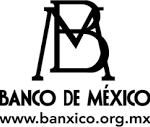 Mexico’s central bank was established in the 1920s. It produces and circulates the peso. The genesis of that came in 1917, when the Mexican constitution was signed. An article in it said that all paper money from then on would be produced by a single bank under the control of the government.
Mexico’s central bank was established in the 1920s. It produces and circulates the peso. The genesis of that came in 1917, when the Mexican constitution was signed. An article in it said that all paper money from then on would be produced by a single bank under the control of the government.
Netherlands – Royal Dutch Mint –  This mint is located in Utrecht. It produces coins and medals. It is owned by the Dutch government, and since the early 1800s it has been the country’s exclusive producer of coins. It today produces euros for surrounding countries, as well as Latvian, Guatemalan and Honduran coins.
This mint is located in Utrecht. It produces coins and medals. It is owned by the Dutch government, and since the early 1800s it has been the country’s exclusive producer of coins. It today produces euros for surrounding countries, as well as Latvian, Guatemalan and Honduran coins.
New Zealand – New Zealand Mint – 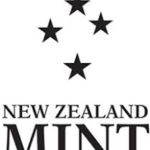 This mint is located in Auckland. It is not where the New Zealand dollar is produced; that is actually done at the British Royal Mint and the Royal Canadian Mint. This mint produces collector’s coins and precious metals. It also produces collector’s coins for a number of pacific islands, including Fiji.
This mint is located in Auckland. It is not where the New Zealand dollar is produced; that is actually done at the British Royal Mint and the Royal Canadian Mint. This mint produces collector’s coins and precious metals. It also produces collector’s coins for a number of pacific islands, including Fiji.
Norway – Royal Norwegian Mint – 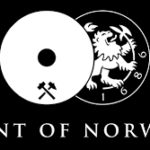 This mint produces Norwegian krone coins. It is in the city of Kongsberg and was founded in the late 1600s. It was formed in connection with the Kongsberg Silverworks, as there was mining done in the area and the silver was brought to the mint to be refined into coins. The mines closed down in the 1950s and the mint was then taken over by Norway’s central bank. In the early 2000s, the central bank sold the mint and it is now owned by multiple stakeholders, including the Mint of Finland.
This mint produces Norwegian krone coins. It is in the city of Kongsberg and was founded in the late 1600s. It was formed in connection with the Kongsberg Silverworks, as there was mining done in the area and the silver was brought to the mint to be refined into coins. The mines closed down in the 1950s and the mint was then taken over by Norway’s central bank. In the early 2000s, the central bank sold the mint and it is now owned by multiple stakeholders, including the Mint of Finland.
Poland – Polish State Mint, Mennica Panstwowa S.A. –  The Mint of Poland produces the nation’s currency, the złoty. It is located in Warsaw. This mint, or other iterations of it, date back to the 1770s. According to its website, it is “listed among the top three most technologically advanced mints in the world.”
The Mint of Poland produces the nation’s currency, the złoty. It is located in Warsaw. This mint, or other iterations of it, date back to the 1770s. According to its website, it is “listed among the top three most technologically advanced mints in the world.”
Portugal – Casada da Moeda – 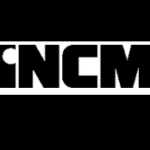 Portugal’s mint is located in Lisbon. It was established in the 1200s to produce currency, as well as medals and documents like passports and postage stamps. Much later, in the 1970s, it merged with the National Press. Portugal today uses the euro, but prior to the late 1990s, it used the escudo, produced by the mint.
Portugal’s mint is located in Lisbon. It was established in the 1200s to produce currency, as well as medals and documents like passports and postage stamps. Much later, in the 1970s, it merged with the National Press. Portugal today uses the euro, but prior to the late 1990s, it used the escudo, produced by the mint.
Russia – Mezhnumizmatika – 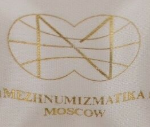 Russia’s minting is done at two mints: the Moscow Mint and the Saint Petersburg Mint. Its central bank is also located in Moscow and was established (under its most recent name, the Central Bank of the Russian Federation; different versions of it had existed in the past) in 1990.
Russia’s minting is done at two mints: the Moscow Mint and the Saint Petersburg Mint. Its central bank is also located in Moscow and was established (under its most recent name, the Central Bank of the Russian Federation; different versions of it had existed in the past) in 1990.
San Marino – Dr. Marino Zanotti, Azienda Autonomado di Stato –  San Marino, a semi-sovereign enclave within Italy, has generally had its coins produced by the Italian government. It did have its own unique coinage before the euro. The first San Marino coin was produced at the Milan Royal Mint in 1864. It switched over to the euro in the early 2000s, but coins from San Marino continue to be valuable collector’s items.
San Marino, a semi-sovereign enclave within Italy, has generally had its coins produced by the Italian government. It did have its own unique coinage before the euro. The first San Marino coin was produced at the Milan Royal Mint in 1864. It switched over to the euro in the early 2000s, but coins from San Marino continue to be valuable collector’s items.
Sierra Leone – Bank of Sierra Leone – 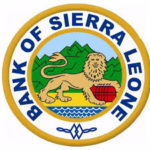 This bank issues Sierra Leone’s currency, the Leone. It was established in 1963 in the city of Freetown. It had gained its independence shortly before that, and established symbolic sovereignty by ceasing use of the British West African pound, and establishing a new bank, currency and economy.
This bank issues Sierra Leone’s currency, the Leone. It was established in 1963 in the city of Freetown. It had gained its independence shortly before that, and established symbolic sovereignty by ceasing use of the British West African pound, and establishing a new bank, currency and economy.
Singapore – Singapore Mint –  Singapore’s mint was founded in the 1960s after it gained its independence from Malaysia. It creates the country’s coins, and has four locations. It also sells collectible coins and gifts. It also runs a museum. It has won a number of awards over the years, most recently “Most Beautiful Commemorative Gold Coin” in 2016.
Singapore’s mint was founded in the 1960s after it gained its independence from Malaysia. It creates the country’s coins, and has four locations. It also sells collectible coins and gifts. It also runs a museum. It has won a number of awards over the years, most recently “Most Beautiful Commemorative Gold Coin” in 2016.
Slovakia – Kremnica Mint –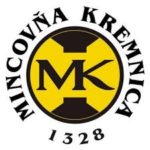 This mint was established in the 1300s by the Hungarian King Charles Robert of Anjou. It is in the town of Kremnica, which is surrounded by gold deposits. The king granted the town permission to operate independently and to mint coins. Today’s mint is still in the town, where it produces Slovak euro coins.
This mint was established in the 1300s by the Hungarian King Charles Robert of Anjou. It is in the town of Kremnica, which is surrounded by gold deposits. The king granted the town permission to operate independently and to mint coins. Today’s mint is still in the town, where it produces Slovak euro coins.
Slovenia – Banka Slovenije –  Slovenia’s central bank was founded in 1991 in Ljubljana. The European Central Bank took control of it in 2007. Up to that point, Slovenia used currency called the tolar, which was produced at the central bank. It now uses the euro and is part of the official Eurosystem.
Slovenia’s central bank was founded in 1991 in Ljubljana. The European Central Bank took control of it in 2007. Up to that point, Slovenia used currency called the tolar, which was produced at the central bank. It now uses the euro and is part of the official Eurosystem.
South Africa – South African Mint –  The South African Mint has experienced three phases: it began operating in 1890 as the national mint, it was established as a branch of the British Royal Mint in 1923, and it has been an independent mint since 1941. It is headquartered in the city of Centurion.
The South African Mint has experienced three phases: it began operating in 1890 as the national mint, it was established as a branch of the British Royal Mint in 1923, and it has been an independent mint since 1941. It is headquartered in the city of Centurion.
Spain – Spanish Royal Mint, Fabrica Nacional de Moneda y Timbre – 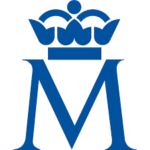 Multiple mints existed in Spain prior to the 1700s, when King Philip V decided to create a central, state-owned mint. Today there are two locations, in Madrid and Burgos. The popular TV show “Money Heist” is a story about the Spanish mint, though it was not filmed at the actual location.
Multiple mints existed in Spain prior to the 1700s, when King Philip V decided to create a central, state-owned mint. Today there are two locations, in Madrid and Burgos. The popular TV show “Money Heist” is a story about the Spanish mint, though it was not filmed at the actual location.
Sweden – Swedish Central Bank, Sveriges Riksbank –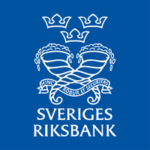 This is the world’s oldest central bank. It is located in Stockholm, and was founded in 1668. The Swedish krona bills are produced there. The krona banknotes are made of raw cotton, featuring historic Swedish artists. It produces a number of commemorative coins as well.
This is the world’s oldest central bank. It is located in Stockholm, and was founded in 1668. The Swedish krona bills are produced there. The krona banknotes are made of raw cotton, featuring historic Swedish artists. It produces a number of commemorative coins as well.
Sweden – Swedish Mint, Nordic Coin AB Svenska Myntverket – 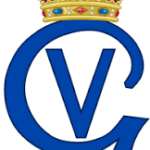 This is a private company that produced coins and medals in Sweden. It was known for making krona coins and Nobel Prize medals. However in 2008, the Myntverket ceased coin production, and all of Sweden’s coins are now made by the Mint of Finland.
This is a private company that produced coins and medals in Sweden. It was known for making krona coins and Nobel Prize medals. However in 2008, the Myntverket ceased coin production, and all of Sweden’s coins are now made by the Mint of Finland.
Switzerland – Banque Nationale Suisse – 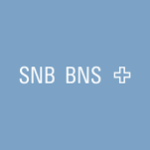 The Swiss National Bank is the only place in the world that produces Swiss franc banknotes. It has two offices: in Bern and Zurich. It was established in the early 20th century. It also manages Switzerland’s gold reserves, the location of which it does not disclose.
The Swiss National Bank is the only place in the world that produces Swiss franc banknotes. It has two offices: in Bern and Zurich. It was established in the early 20th century. It also manages Switzerland’s gold reserves, the location of which it does not disclose.
Thailand – The Royal Decorations and Coins Division –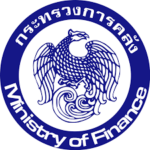 This mint was founded in 1860. Today it is in the city of Pathum Thani. It is under direct governmental control, functioning as a sub-division of the Thai Treasury Department. It produces coins, medals and ornamental items, and employs over 900 people.
This mint was founded in 1860. Today it is in the city of Pathum Thani. It is under direct governmental control, functioning as a sub-division of the Thai Treasury Department. It produces coins, medals and ornamental items, and employs over 900 people.
Turkey – Turkish Mint – ![]() This mint is located in Istanbul, and is controlled by the government. The earliest version of the Turkish mint was established in the year 1467 and replaced the mint in the ancient city of Constantinople as the mint of the Ottoman Empire. It produces the Turkish coins, kurus and lira.
This mint is located in Istanbul, and is controlled by the government. The earliest version of the Turkish mint was established in the year 1467 and replaced the mint in the ancient city of Constantinople as the mint of the Ottoman Empire. It produces the Turkish coins, kurus and lira.
USA – United States of America U.S. Mint – 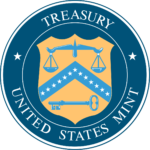 The US Mint was established about 20 years after the founding of the nation. It was originally in Philadelphia, but is in Washington, D.C. today, and employs almost 2,000 people. It falls organizationally under the Department of the Treasury. It produces coins only.
The US Mint was established about 20 years after the founding of the nation. It was originally in Philadelphia, but is in Washington, D.C. today, and employs almost 2,000 people. It falls organizationally under the Department of the Treasury. It produces coins only.
Vatican City – Filatelico e Numismatico – 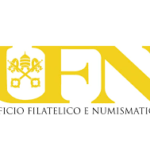 This office mainly oversees collecting-related activities of Vatican postal stamps and euro coins, which are produced on a limited basis and are mainly collector’s items. The euro is Vatican City’s official currency, and though euro coins are technically issued by the Vatican, they are actually minted at the Italian State Mint.
This office mainly oversees collecting-related activities of Vatican postal stamps and euro coins, which are produced on a limited basis and are mainly collector’s items. The euro is Vatican City’s official currency, and though euro coins are technically issued by the Vatican, they are actually minted at the Italian State Mint.
